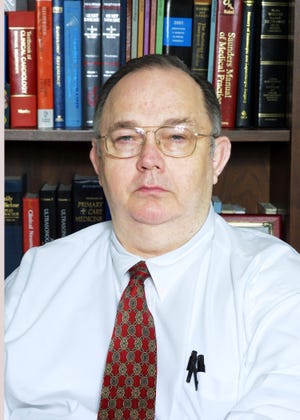Computing innovator Henry Edward Roberts was humble achiever

Not Oklahoma State University alumnus Henry Edward Roberts.
He was so humble that many people, including some neighbors, didn’t realize the significance of his contributions to technology and society, said Jason Caniglia, associate vice president for development, arts and sciences at the OSU Foundation.
Roberts, a 1968 OSU graduate and personal computing pioneer, developed the world’s first general-purpose microcomputer and served as a mentor for industry magnates such as Gates and Allen. He died earlier this month at the age of 68.
"He was very soft-spoken, very determined to make a difference,” said Caniglia, who attended Roberts’ funeral last week in Cochran, Ga.
When he was a student at OSU, Roberts and other students had open access to the school’s mainframe computer, an IBM 1620. Roberts later told future generations of OSU students how much he appreciated the trust the university gave students by allowing them to use the computer. It prompted him to think about what would happen if everyone had access to a computer, Caniglia said.
During the mid-1970s, Roberts led development of the MITS Altair 8800, which is widely credited as the world’s first personal computer. Gates and Allen, who read about the Altair in a magazine, contacted Roberts and offered to develop an operating system for the Altair, said Karl Reid, dean of the College of Engineering, Architecture and Technology.
In a joint statement they released after Roberts’ death, Gates and Allen described Roberts as a friend and mentor who cared deeply about the people who worked for him.
"Ed was willing to take a chance on us — two young guys interested in computers long before they were commonplace — and we have always been grateful to him,” the statement reads.
Computer technology was just one area Roberts explored during his career.
Roberts also developed laser-pointed weapons and electronic calculators during a stint in the Air Force, and later developed software to help farmers and ranchers increase productivity, Reid said.
At the age of 41, Roberts went back to school to earn a medical degree. He then established a practice in Cochran, Ga., a community of about 4,500 people in central Georgia.
Caniglia said Roberts used the same care and attention to detail as a physician as he had when he was an electrical engineer.
Patients and friends who attended Roberts’ funeral spoke about how much he cared about them, Caniglia said. Knowing details about his patients’ lives often helped Roberts to identify health problems, Caniglia said.
Roberts returned to the Stillwater campus to visit several times during his career. He was a shy man who didn’t like talking in public, but students were in awe whenever he spoke about his experiences, Reid said.
Reid gave a special tribute to Roberts on Friday night during an awards ceremony for the presentation of the 2010 Lohmann Medal, which is an award designed to recognize alumni for their contributions to their profession or to the education of future engineers, architects or technologists.
Roberts received the medal in 2002, and he was inducted into the OSU Alumni Association Hall of Fame in 2003.
"Our students today and tomorrow and the next day need to know about the life and the impact of Dr. Roberts,” Reid said before the event. "He was a very special, very humble man.”
Roberts will be featured in the upcoming issue of STATE, OSU’s official magazine. A panel dedicated to his accomplishments is included in Southwestern Legacy Hall at the ConocoPhillips OSU Alumni Center.